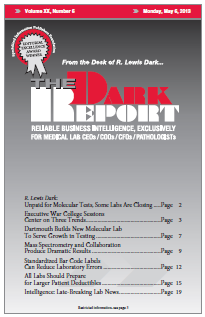CEO SUMMARY: Employers are taking active steps to control the year-over-year increases in the cost of health benefits. One strategy gaining favor is to move employees away from traditional health plans and enroll them in high-deductible health plans (HDHPs). This is a trend with huge financial implications for clinical labs and pathology groups. It means …
Labs Should Prepare for Larger Patient Deductibles Read More »
To access this post, you must purchase The Dark Report.


